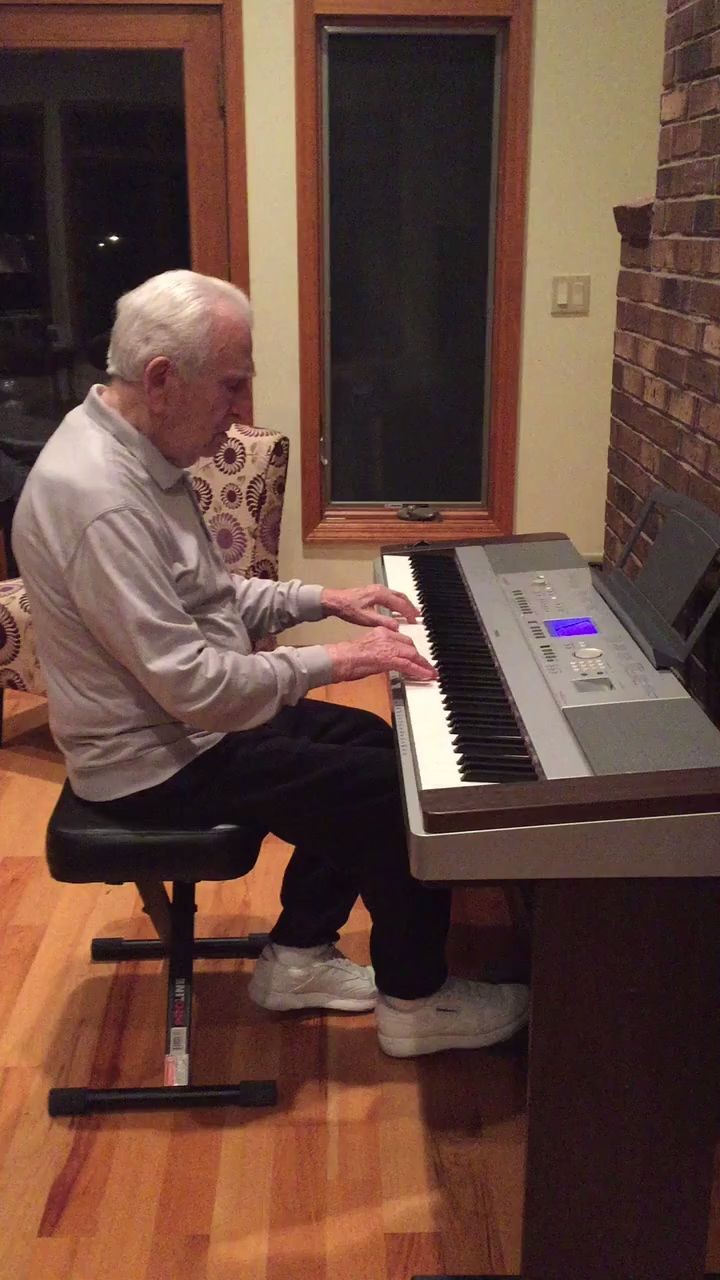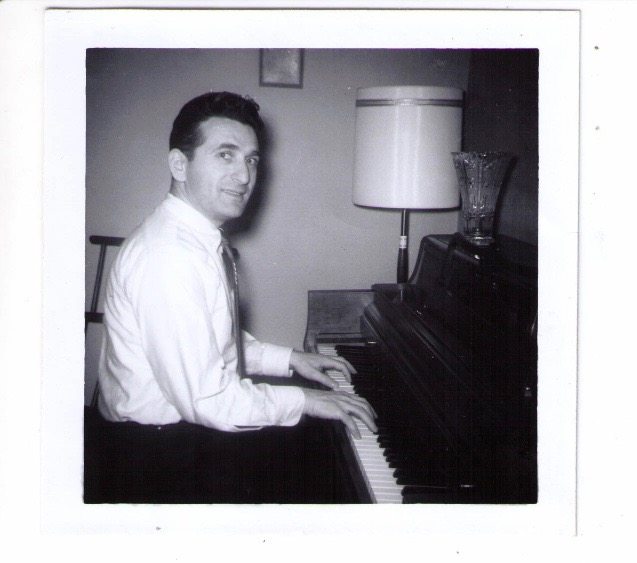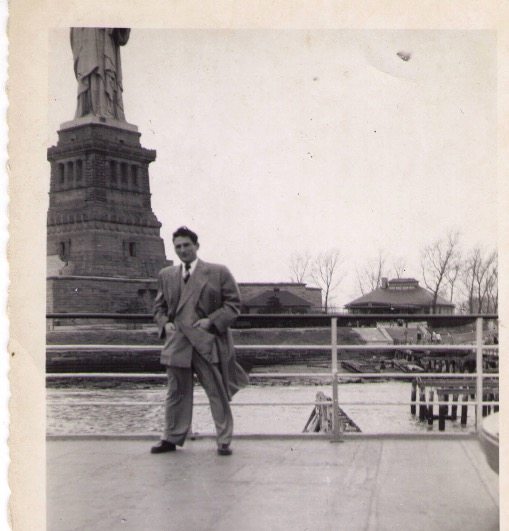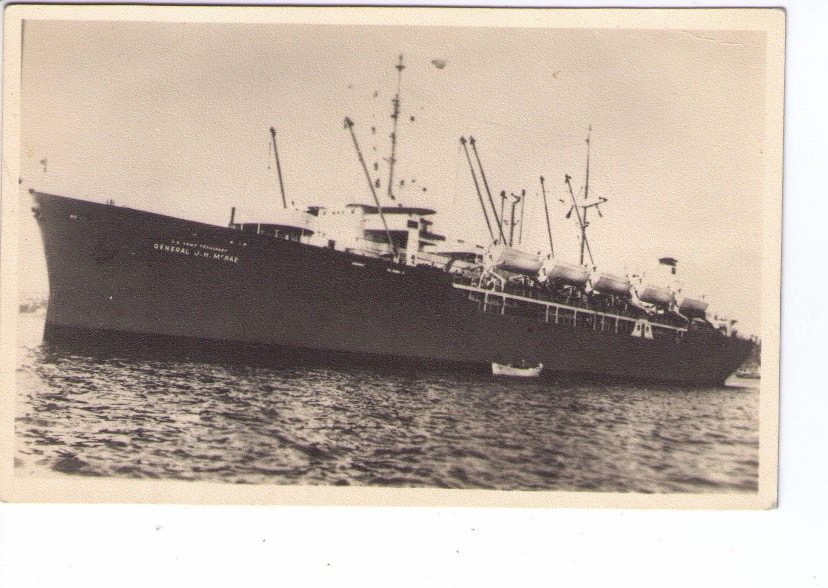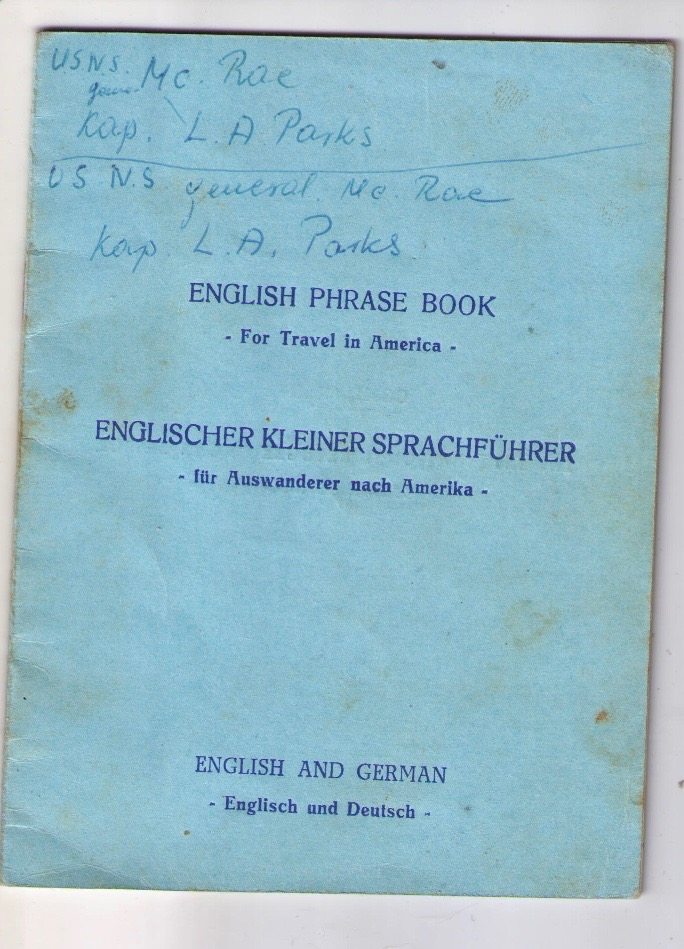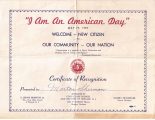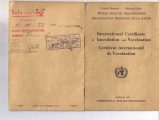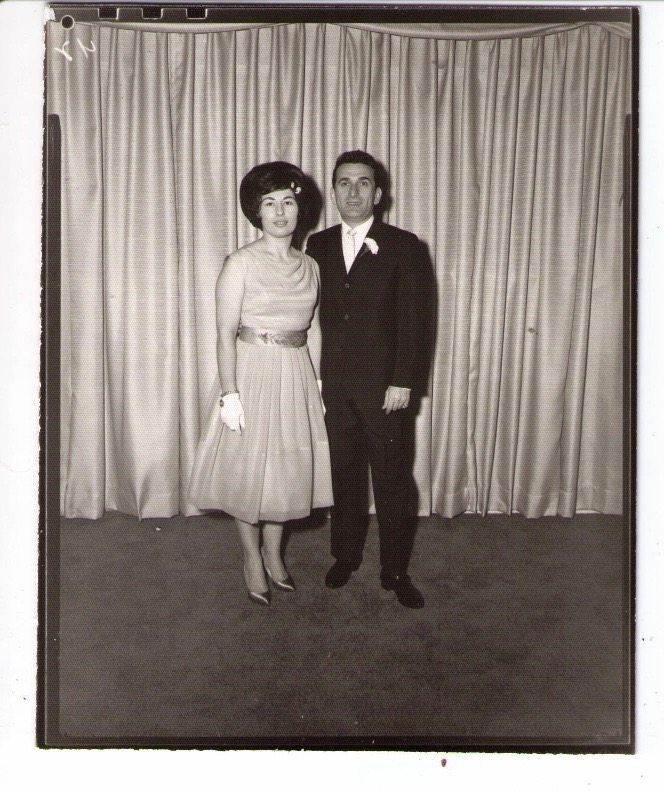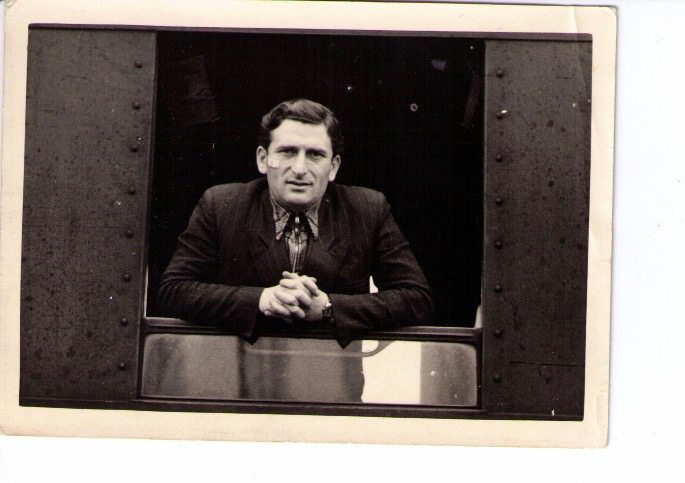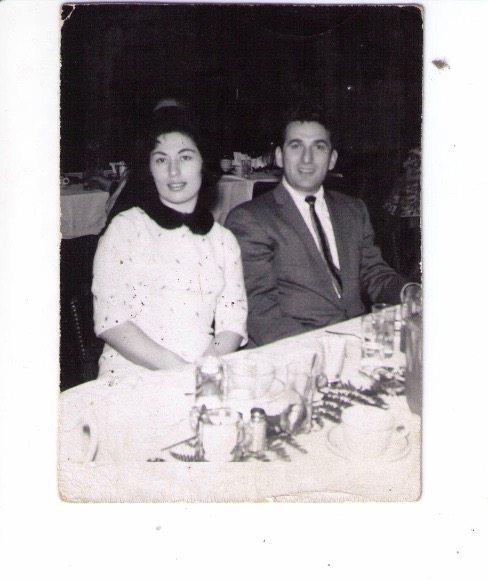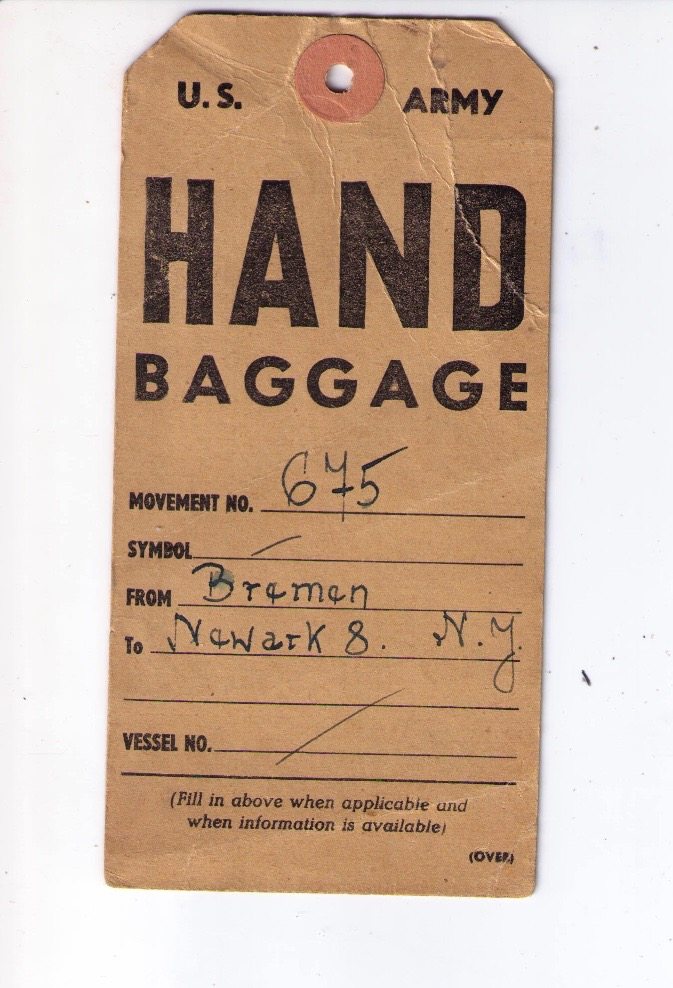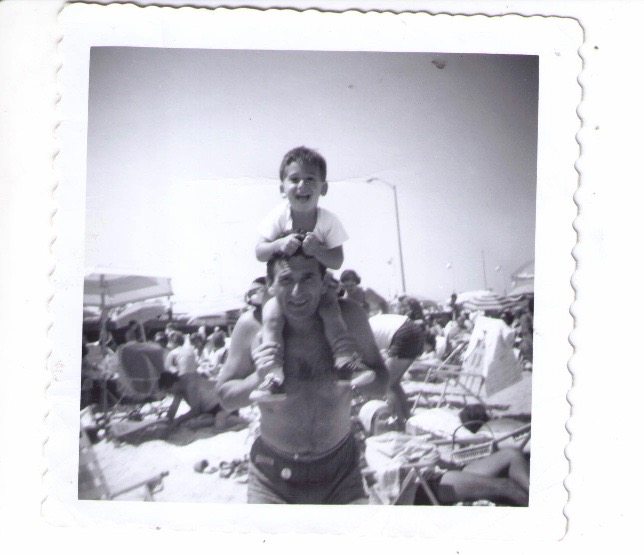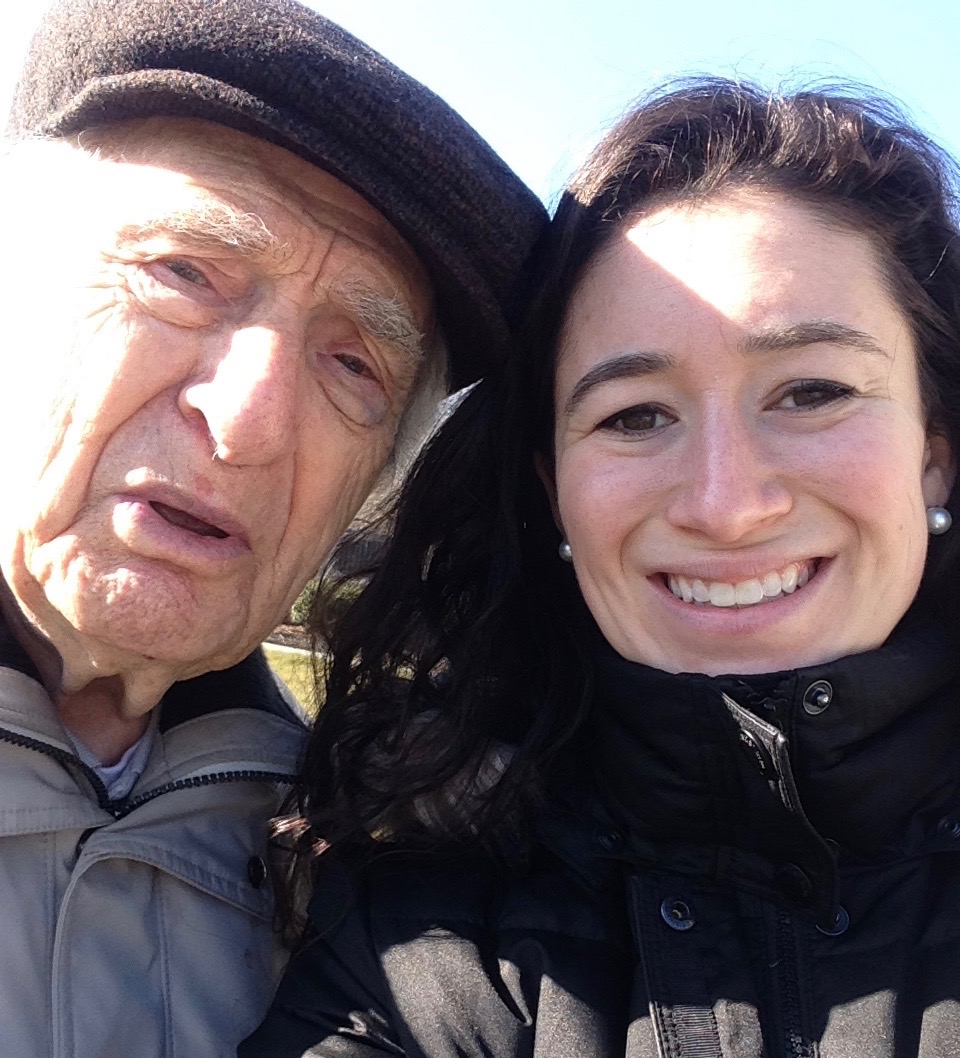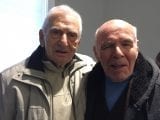- Local Survivor registry
- MORTON SHERMAN
- Local Survivor registry
- MORTON SHERMAN
Survivor Profile
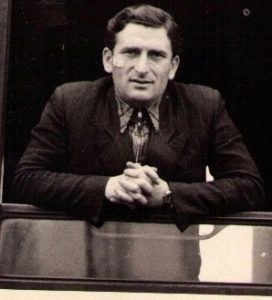
MORTON
SHERMAN
(1922 - PRESENT)
PRE-WAR NAME:
MORDKA SZAJEWICZ--CENTENARIAN)
MORDKA SZAJEWICZ--CENTENARIAN)
PLACE OF BIRTH:
KONSKIE, POLAND
KONSKIE, POLAND
DATE OF BIRTH:
MARCH 7, 1922
MARCH 7, 1922
LOCATION(s) BEFORE THE WAR:
KONSKIE, POLAND
KONSKIE, POLAND
LOCATION(s) DURING THE WAR:
BIALYSTOK; SIBERIA
BIALYSTOK; SIBERIA
STATUS:
SURVIVOR, REFUGEE
SURVIVOR, REFUGEE
RELATED PERSON(S):
DORIS SHERMAN - Spouse (Deceased),
BARRY SHERMAN - Son,
ADRIENNE SHERMAN - Daughter-in-law,
ERIC SHERMAN - Grandson,
SAMANTHA FAITH SHERMAN - Granddaughter
-
BIOGRAPHY BY SAMANTHA SHERMAN, GRANDDAUGHTER
Mordka Szajewicz (Morton Sherman) was born in Konskie, Poland on March 7th, 1922. Morty lived with his parents and six siblings in Konskie and had a modest upbringing. During his childhood, he attended seven years of grammar school and enjoyed playing sports with his friends and teaching himself to play musical instruments.
At the age of 17, as Hitler and the Nazi army continued to gain momentum, Morty had a bad feeling. He left his family and fled to Russia with a friend and was soon shipped to a labor camp in Siberia. Morty endured harsh physical labor, starvation, frigid temperatures, and sickness, but ultimately prevailed and was released in 1945. He returned to Poland, only to find a seemingly untouched house, but with no family inside.
Despite the unforgiving reality of the situation, Morty once again triumphed in the face of hardship, and in hopes of coming to America, traveled to Germany where he lived with a girlfriend for a few years. In 1950, Morty boarded the U.S.S. General McRae to Newark, New Jersey in hopes of a new life in America. Within a few years of living in the United States, Morty taught himself English and Spanish, developed a successful business, and met his future wife, Doris Sperber.
Editor’s Notes:
Refer to Samantha Sherman’s Testimony in Voices of Descendants
Refer to Morton Sherman’s Video playing the Piano in Video Gallery.
Refer to “Konskie Jewish History and the Konskie Ghetto” in Historical Notes Below
-
SURVIVOR INTERVIEW:
MORTON SHERMAN INTERVIEW WITH SAMANTHA SHERMAN, GRANDDAUGHTER
Date: July 23, 2017
Location: Sherman Residence, Bridgewater, New Jersey
Interviewer, Nancy Gorrell
Q: Describe your family background.
I was born in Konskie, Poland. I lived 17 years in Konskie. We all lived on a farm. It was a market town. There were stores where you could buy food. My parents, Berek and Hendla (Figlarczyk) were born on a farm. I had four sisters and three brothers. I was the youngest of the seven. My older sister and I were eight years apart. There were two before me, but the two died. When my parents came to Konskie, it was a big town. My father used to take me to the place where he used to live, and all there was to see was sand and dry land. There was wheat farming there; they ate the food they could take off and eat like potatoes. There was an orchard. I slept one night in the orchard. There were apples and pears.Q: You did not mention your grandparents.
My grandfather lived to 97. He had 18 kids with three wives. They were all gone when I was born. I did not know my grandfather.Q: What was Jewish life like in Konskie?
There was a synagogue in the town. Torah readers stayed there and davened. There were non-Jews in the town too, and probably around 250 Jews. We lived in one place and the non-Jews lived on different streets. We had a small place, and we produced articles made out of brass. My father used to melt glass into liquid. The items would pile up with the press. With the holes facing up, you would take a ladle and fill it with liquid metal and you would pour it into the forms. We made handles to doors, hooks, knobs, car bearings, brass water faucets—anything from brass. We had a house; four rooms for seven kids; we had three meals a day. My mother was the cook; my father the businessman; I went to school.Q: Describe your schooling?
I have seven years of grammar school. There was one hour a week with the rabbi. Jews and non-Jews went to school together.Q: Did you experience any anti-Semitism?
Are you kidding? Anti-Semitism was like a meal. Jewish and Catholic kids in school were in different classes. We had reading, writing and math, all very basic, and religion, offered once a week. We had nothing to do with the Catholic kids or Catholic teachers. One teacher who was Jewish taught religion.Q: What was your religious background or observance?
I only went when my father dragged me. “If you don’t go, you don’t eat.” I went every Shabbat. My sisters went to school. We were kosher in the home. It was like a melody. We had harmony. When you have a big family, if everyone wants to pull the wagon, it stays in the same spot.Q: Do you have memories of friends?
I had kid friends; we played ball.Q: Did you know about Hitler?
Yes, but we didn’t believe Hitler would come to Poland.Q: Describe what happened to you and your family when the war began?
We were occupied by the Germans. They turned off the city lights. I had a feeling… sometimes I feel I can read tomorrow. I foresaw the Holocaust, but I had nobody to talk to. That saved my life. I was 17. I fled to Russia. I was there until age 25. In World War II, Russia took away a piece of the Poland, and when Hitler came in, Russia came in and took it back. So I went by train to Russian occupied Poland—Bialystok.Q: Describe your fleeing to Bialystok.
I went with a young friend my age, but he didn’t make it; he died in Russia. I was in Siberia for 2-3 years. I lived with the Muslims for three years when Hitler attacked Russia in 1941. Then the Russians picked us up and sent us to Siberia for work.Q: What was Siberia like for you?
You’re lucky if they fed you—they gave you soup and a kilogram of bread a day. We slept in barracks of 10-15 people. I was in Siberia. I was 100 kilometers from the top of the world. When it became May 15th, we didn’t have night for three months. When the weather came, we had problems. We were cutting down trees for lumber.Q: When did you get out of Siberia?
They let us go in 1945. The put us on a train back to Poland. I went back to our house. Everything was there—brooms, spoons, dishes, even my clothing. I asked, “Where are the people?” The Polish people said, “They took them away, and they didn’t come back.” Everything was in the same place—but the house was empty.Q: Who survived in your family?
After I left, I knew nothing about my family. I know when I left them, I left siblings; they were all married and everybody had two kids. There were 24 people in my family, and they were all gone. Only one of my brothers survived, Jack; he went to Russia too.Q: Do you know what happened to your brother, Jack?
Jack came back to the town like I came back. I was going shopping a year later. I was shopping and I saw him. There I see him in a big store. We both recognized each other. He had a place in Piotrolesia, and I lived a week with him in his house. He had three kids and a wife. I helped him and then I went away. I didn’t want to live in his house. I was 25 years old.Q: Describe the immediate post war period for you.
I picked myself up and went to Germany, to Hoff, Bayren. I met a lot of Jewish people in Hoff, all survivors. After a while, I met a German girl, Else Pistel. Her family had a bakery and store where they sold their own products, and she was my girlfriend for three years. I moved in with her German family; I rented a room and she cooked and I ate supper and breakfast. I lived in Hoff four years and then came to America on December 22, 1950.Q: Did she know you were Jewish?
Yes. She knew I was Jewish; she was very nice. Her brothers were Nazis.Q: How and why did you emigrate from Bayren to America?
I had a relative. I arrived three days before Christmas—on the General McRae—in New York City. I got off the boat in New York and as soon as I walked out the steps, a lady came and said, “Come to my house.” I said, “I have to go to Newark.” I went to her house. I didn’t know what American rich people look like. I see on the wall faces of Nelson Rockerfeller. “I am not a Rockerfeller family, but I had a sister who married into the family,” the woman told me. The lady cooked for me a supper. She had a house worth $600,000; she gave me a nice supper. What was this? Why did she do this? Maybe she likes me? But I didn’t make an attempt. You know how many people got off that boat? I was 28 years old. She was probably in her sixties.Q: Where did you settle in America?
I lived in Newark on Renner Ave with my relatives. I worked for a company. I didn’t speak English then so it was hard. I worked for a Jewish company. It took me one year to learn English. I speak six languages—Polish, Russian, German, English, Spanish and Yiddish! I went into business in 1954—selling furniture, appliances, carpeting, all household goods. Even clothing. I had a company selling. I lived in Newark until I got married in 1960, to my wife, Doris Sperber. I was selling to all the Puerto Ricans coming to America at the time.Q: How did you meet your wife?
It was a recommendation of a friend. My wife passed in 2017. We lived in Springfield 56 years. Now I am living in Bridgewater with my son.Q: What is your message to future generations?
The fact is that people died in the gas chambers. Leadership in countries is very important. In America we have democracy. We live in a country for all, not for some. -
HISTORICAL NOTES:
Konskie Jewish History and the Konskie Ghetto
The first mention to the Jewish community in Końskie dates back to the 16th century. The pre World War II Jewish population of Końskie (known as Koinsk during the Russian occupation or Kinsk in Yiddish – קינצק / קינסק among the Jews) comprised 60.6% of the total population of the town or about 6,500 persons in September 1939. After the Nazi German invasion of Poland, a Ghetto was established in 1940 and closed off in the spring of 1941. The complete eradication of the Jewish population of Końskie took place on November 3–9, 1942, when all men, women and children were loaded onto Holocaust trains to Treblinka II and gassed to death. Approximately 600 Jews were murdered by the Nazis on the way to the camp. In the subsequent January 1943 “Aktion” in the Konskie Ghetto, remaining Jews were ferreted out from attics and other hiding places and murdered.
Końskie was briefly visited by Adolf Hitler on September 10, 1939 while on the way to Kielce after landing on an airfield nearby. His car cavalcade visited the headquarters of General Walther von Reichenau at the local mansion. Hitler was followed by director Leni Riefenstahl who came a day later, ordered to film the Nazi German victory over Poland. Reportedly, she fainted when witnessing the random killing of two dozen Jews summoned to dig graves on September 12, 1939.
-
Sources and Credits:
Credits:
SSBJCC Survivor Registry Interview with Morton Sherman and Samantha Sherman, granddaughter; Interviewer: Nancy Gorrell; Biography by Samantha Sherman; Digital historic and family photographs donated by Barry and Adrienne Sherman.


